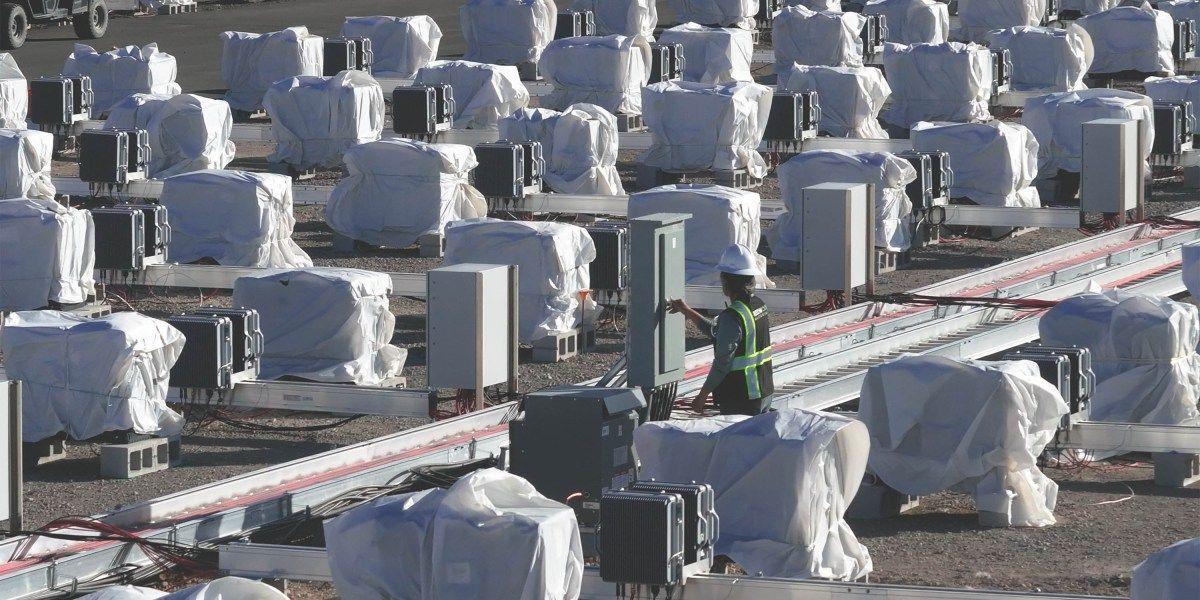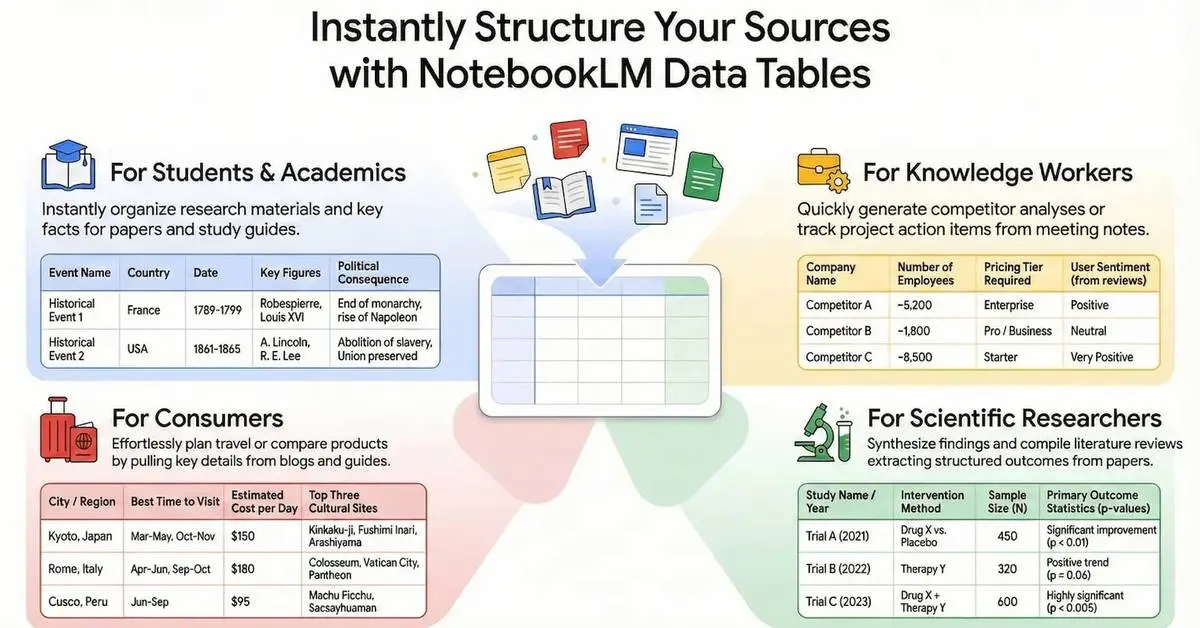Redwood Materials Launches Energy Storage Business, Targeting AI Data Centers with Repurposed EV Batteries
4 Sources
4 Sources
[1]
Redwood Materials launches energy storage business and its first target is AI data centers | TechCrunch
Tucked between two massive buildings in the hills of the Nevada desert, 805 retired EV batteries lie in a neat formation, each one wrapped in a nondescript white tarps -- and hiding in plain sight. A passerby might not realize that it's the largest microgrid in North America, that it's powering a 2,000 GPU modular data center for AI infrastructure company Crusoe, or that it is Redwood Materials co-founder and CEO JB Straubel's next big act. Redwood Materials announced Thursday during an event at its Sparks, Nevada facility it was launching an energy storage business that will leverage the thousands of EV batteries it has collected as part of its battery recycling business to provide clean power to companies, starting with AI data centers. The new business, called Redwood Energy, is kicking off with partner Crusoe. The old EVs, which are not yet ready for recycling, store energy generated from an adjacent solar array. From here the system, which generates 12 MW of power and has 63 MWh of capacity, sends power to a modular data center built by Crusoe, the AI infrastructure company best known for its large-scale data center campus in Abilene, Texas, the initial site of the Stargate project. Redwood said it recovers more than 70% of all used or discarded battery packs in North America. It has apparently been stockpiling batteries that aren't ready for recycling, with more than 1 gigawatt-hour worth in its inventory already. In the coming months, it expects to receive another 4 gigawatt-hours. By 2028, the company said it plans to deploy 20 gigawatt-hours of grid-scale storage, placing it on track to become the largest repurposer of used EV battery packs. To illustrate the commitment of Redwood -- and by extension, Straubel -- the company's entire event from the lights and DJ to the food and big screen, were powered by the microgrid. "We wanted to go all in," Straubel said, breaking into a wide toothy smile. Splashy effects for the event aside, the microgrid set up with Crusoe is not a demonstration project. Straubel said this is a revenue-generating operation, and one that is profitable. And even more of these will be deployed with other customers this year. "I think this has the potential to grow faster than the core recycling business," he said. Redwood Materials has been on an expansion tear in recent years. The company, which has raised $2 billion in private funds, was founded in 2017 by Straubel, the former Tesla CTO and current board member to create a circular supply chain. The company started by recycling scrap from battery cell production as well as consumer electronics like cell phone batteries and laptop computers. After processing these discarded goods and extracting materials like cobalt, nickel and lithium that are typically mined, Redwood supplies those back to Panasonic and other customers. But the company has expanded beyond recycling and into cathode production. Redwood generated $200 million in revenue in 2024. Much of that comes from the sale of battery materials like cathodes. It's footprint has grown too, and well beyond its Carson City, Nevada headquarters as it locked up deals with Toyota, Panasonic, and GM, started construction on a South Carolina factory, and made an acquisition in Europe. Redwood Energy is the next step, one that isn't tied to setting up its systems to be off grid. The retired EV batteries can be powered by wind and solar, or it can be tied to the grid. In the case of the Crusoe project, it's powered by solar. "There's no green intent required here," CTO Colin Campbell said during a tour of the microgrid. "It's a good economic choice that also happens to be carbon free." For over a decade, companies have been promising to build grid-scale storage from used EV batteries, but they've only materialized in small amounts. Redwood, which got its start as a battery materials and recycling company, is creating a new business line that promises to deliver gigawatts of much needed energy storage in just a few years. "This really demonstrates how economical the waste hierarchy actually is," Jessica Dunn, a battery expert at the Union of Concern Scientists, told TechCrunch. That a large recycler like Redwood recognized the profit potential in reprised EV batteries shows "where this end of life market will go," she added. Redwood was founded to build a supply chain that could handle the predicted wave of used EV batteries that will hit the market. But that wave hasn't materialized quite as quickly as some predicted. Repurposing batteries is a clear business opportunity for Redwood, but it might also be a business imperative. "If Redwood didn't enter the repurposing market, then they wouldn't get a share from the repurposed battery. They'd have to wait the five, ten, 15 years until they retired." she said. In the meantime, other companies would be able to sell the batteries for grid-scale storage, cutting Redwood out of years of revenue. Straubel acknowledged this, noting in an interview that in many ways Redwood Materials started a bit early. "We started really early, and in a way we started Redwood almost too early," he said, noting the company initially was collecting consumer batteries and production scrap ahead of the coming wave of EVs. "Right now, the recycling market is mostly manufacturing scrap, consumer electronics, and EV batteries that have failed under warranty," Dunn said. That has been enough for Redwood to process over 20 gigawatt-hours annually, but it pales in comparison to the 350 gigawatt-hours in EVs today and the 150 gigawatt-hours expected to hit the road every year. Redwood currently has a recycling facility at its 175-acre campus in Sparks, Nevada, and it's developing a 600-acre facility in Charleston, South Carolina. The latter will remanufacture cathode and anode copper foil, both of which contain critical minerals that the U.S. would prefer stayed within its borders. The company previously said that it will be capable of making 100 gigawatt-hours annually of cathode active material and anode foil by the end of this year. By the end of the decade, it expects production to hit 500 gigawatt-hours.
[2]
This battery recycling company is now cleaning up AI data centers
The event marked the launch of the company's new business line, Redwood Energy, which will repurpose (rather than recycle) batteries with years of remaining life to create renewable-powered microgrids. Such small-scale energy systems can operate on or off the larger electricity grid, providing electricity for businesses or communities. Redwood Materials says many of the batteries it takes in for processing retain more than half their capacity. "We can extract a lot more value from that material by using it as an energy storage project before recycling it," JB Straubel, Redwood's founder and chief executive, said at the event. This first microgrid, housed at the company's facility in the Tahoe Reno Industrial Center, is powered by solar panels and capable of generating 64 megawatt-hours of electricity, making it one of the nation's largest such systems. That power flows to Crusoe, a cryptocurrency miner that pivoted into developing AI data centers, which has built a facility with 2,000 graphics processing units adjacent to the lot of repurposed EV batteries. (That's tiny as modern data centers go: Crusoe is developing a $500 billion AI data center for OpenAI and others in Abilene, Texas, where it expects to install 100,000 GPUs across its first two facilities by the end of the year, according to Forbes.) Redwood's project underscores a growing interest in powering data centers partially or entirely outside the electric grid. Not only would such microgrids be quicker to build than conventional power plants, but consumer ratepayers wouldn't be on the hook for the cost of new grid-connected power plants developed to serve AI data centers. Since Redwood's batteries are used, and have already been removed from vehicles, the company says its microgrids should also be substantially cheaper than ones assembled from new batteries. Redwood Energy's microgrids could generate electricity for any kind of operation. But the company stresses they're an ideal fit for addressing the growing energy needs and climate emissions of data centers. The energy consumption of such facilities could double by 2030, mainly due to the ravenous appetite of AI, according to an April report by the International Energy Agency. "Storage is this perfectly positioned technology, especially low-cost storage, to attack each of those problems," Straubel says.
[3]
Redwood Materials is giving old EV batteries a second life as microgrids
Andrew J. Hawkins is transportation editor with 10+ years of experience who covers EVs, public transportation, and aviation. His work has appeared in The New York Daily News and City & State. Redwood Materials is repurposing old EV batteries into energy storage systems that cost "substantially less" than brand new storage projects, the company said Thursday. The electric vehicle battery recycling and manufacturing venture, which was founded by Tesla's former chief technologist, has created a new division called Redwood Energy to manage these projects. The aim is to divert "depreciated but functional" EV batteries from the recycling stream and repurpose them into "low-cost, large-scale" energy storage systems that can help plug critical gaps in the energy grid. Redwood says it receives over 20 GWh of batteries annually -- the equivalent of 250,000 EVs -- which represents about 90 percent of all lithium-ion batteries and battery materials recycled in North America. And often times, the batteries it receives for recycling still have a lot of usable energy capacity -- up to 50 percent. These are batteries that are no longer suitable to power an electric vehicle, but still have enough life in them to serve some purpose. So rather than recycle those still functional batteries, Redwood is turning them into stationary storage systems. And the company says this will be a growing opportunity as more EV batteries reach the end of their lifespan. Redwood estimates that more than 100,000 EVs will come off the road this year alone. After recovering the battery packs, Redwoods engineers perform a diagnostics check to determine whether its a suitable candidate for recovery or recycling. If its reusable, the pack is installed into "flexible, modular storage systems" which can operate independently or connect to the grid. Redwood says it has "over a gigawatt-hour" of reusable batteries in its pipeline, a number it expects to grow by 5 GWhs in the coming year. Redwood has already deployed its first microgrid powered by upcycled EV batteries. The grid, with 12 MW of power and 63 MWh of capacity, is located at the company's campus in Nevada and is being used to power a 2,000-GPU modular data center for AI infrastructure company Crusoe. Redwood calls it the "largest second-life battery deployment in the world" with enough energy to power "9,000 homes, support 20 Amtrak trips between New York and Washington, D.C., or charge an EV for a 240,000-mile journey -- the distance to the moon."
[4]
This data center in Nevada runs on solar power and reused EV batteries in groundbreaking project
Forward-looking: Growing demand for AI-driven data centers is straining the energy grid. Repurposed electric vehicle batteries offer a promising solution, storing renewable energy more efficiently while reducing waste. This emerging technology could reshape how we power the digital age. Redwood Energy, a Redwood Materials venture, aims to change how people use lithium-ion batteries. Instead of sending batteries from electric vehicles straight to recycling, the company gives them a second life, extending their use before reclaiming minerals like lithium, cobalt, and nickel. The company's engineers and technicians found that many batteries still hold over half their original capacity after they're no longer suitable for cars. Instead of breaking them down immediately, the team repurposes these batteries as stationary energy storage units. Redwood runs a nationwide logistics network that collects over 70 percent of North America's used battery packs each year. Technicians conduct advanced diagnostics to determine whether to reuse a battery or recycle it. Those that pass are assembled into modular energy storage systems, regardless of manufacturer or chemistry. Redwood's control system enables these diverse packs to work together, storing and delivering electricity on demand. Repurposed battery systems are a natural fit for modern data centers, which are expanding rapidly with the rise of AI and cloud computing. These facilities consume massive amounts of power, and analysts forecast a significant surge in demand. By 2028, data centers could use up to 12 percent of all electricity generated in the US. Traditional grid expansion and battery production can't keep up, and while wind and solar are clean, they're intermittent. Large-scale battery storage helps fill the gap by storing excess energy when it's available and releasing it when it's not. A new microgrid built near Reno, Nevada, with AI infrastructure company Crusoe, shows this approach in action. The installation delivers 12 megawatts of power and 63 megawatt-hours of storage, making it the largest second-life battery deployment in the world - and the largest microgrid in North America. Hundreds of repurposed EV batteries, paired with solar panels, now power a data center running 2,000 GPUs. The entire project came together in just four months, far faster than the years it often takes to secure new grid connections or build a power plant. It works well because stationary storage puts less strain on batteries than powering a moving vehicle. Electric vehicle batteries must handle rapid acceleration and constant cycling, but microgrids operate at slower discharge rates and lower frequencies. As a result, batteries no longer suited for cars can still perform reliably in this role - often at half the cost of new lithium-ion systems, with similar performance. Redwood's approach closes the battery lifecycle loop: after repurposing batteries in microgrids, the company eventually recycles them to recover critical minerals and feed the supply chain. This model has broad potential. With over five million electric vehicles on US roads and more than 100,000 retiring each year, the pool of reusable batteries is growing fast. Redwood estimates that these second-life batteries could eventually supply half or more of the entire energy storage market. JB Straubel, founder of Redwood Materials and co-founder of Tesla, calls this just the beginning. He told Bloomberg the company already has enough reusable batteries to power microgrids supplying over a million homes for an hour, with plans for projects ten times larger than its current deployment.
Share
Share
Copy Link
Redwood Materials, a battery recycling company, has launched Redwood Energy, a new business line that repurposes used EV batteries to create renewable-powered microgrids for AI data centers, addressing the growing energy demands of the AI industry.
Redwood Materials Enters Energy Storage Market
Redwood Materials, a battery recycling company founded by former Tesla CTO JB Straubel, has announced the launch of Redwood Energy, a new business line focused on repurposing used electric vehicle (EV) batteries for energy storage
1
. This innovative approach aims to address the growing energy demands of AI data centers while providing a sustainable solution for retired EV batteries.The Microgrid Project: Powering AI Infrastructure

Source: The Verge
Redwood Energy's first major project is a microgrid located at their facility in Sparks, Nevada. This installation, which is the largest microgrid in North America, consists of 805 retired EV batteries and generates 12 MW of power with 63 MWh of capacity
1
2
. The system is powered by an adjacent solar array and supplies energy to a 2,000 GPU modular data center operated by Crusoe, an AI infrastructure company1
3
.Repurposing EV Batteries: A Sustainable Approach
Redwood Materials recovers more than 70% of all used or discarded battery packs in North America
1
. Many of these batteries still retain over 50% of their original capacity, making them suitable for repurposing rather than immediate recycling2
. This approach not only extends the life of the batteries but also provides a cost-effective solution for energy storage.Addressing the Energy Demands of AI

Source: TechSpot
The repurposed battery systems are particularly well-suited for modern data centers, which are experiencing rapid expansion due to the rise of AI and cloud computing. Analysts forecast that by 2028, data centers could consume up to 12% of all electricity generated in the US
4
. Redwood Energy's microgrids offer a solution to this growing demand while utilizing renewable energy sources.Future Plans and Market Potential
Redwood Materials has ambitious plans for its energy storage business. By 2028, the company aims to deploy 20 gigawatt-hours of grid-scale storage, positioning itself to become the largest repurposer of used EV battery packs
1
. With over 5 million electric vehicles on US roads and more than 100,000 retiring each year, the pool of reusable batteries is growing rapidly4
.Related Stories
Economic and Environmental Benefits
The repurposed battery systems offer significant economic advantages, with Redwood claiming they can be deployed at about half the cost of new lithium-ion systems while providing similar performance
4
. This approach also aligns with circular economy principles, as the batteries will eventually be recycled to recover critical minerals after their second life in energy storage4
.Industry Impact and Future Outlook

Source: MIT Tech Review
Redwood Energy's entry into the energy storage market could have far-reaching implications for both the EV and data center industries. By creating a new revenue stream from used EV batteries, the company is adding value to the entire EV lifecycle
3
. Additionally, this solution addresses the challenges of powering AI data centers, which have been straining traditional energy grids4
.As the demand for AI computing power continues to grow, Redwood Energy's innovative approach to energy storage could play a crucial role in sustainably powering the digital age while reducing electronic waste and maximizing the use of existing resources.
References
Summarized by
Navi
[1]
[2]
Related Stories
GM and Redwood Materials Partner to Repurpose EV Batteries for Energy Storage
17 Jul 2025•Technology

AI Data Centers Drive $580 Billion Investment Surge as Power Grid Struggles to Keep Pace
10 Nov 2025•Business and Economy

Google's $800M Clean Energy Initiative: Powering AI-Driven Data Centers with Renewable Sources
11 Dec 2024•Business and Economy

Recent Highlights
1
Google launches Gemini 3 Flash as default AI model, delivering speed with Pro-grade reasoning
Technology

2
OpenAI launches GPT Image 1.5 as AI image generator war with Google intensifies
Technology

3
OpenAI launches ChatGPT app store, opening doors for third-party developers to build AI-powered apps
Technology





